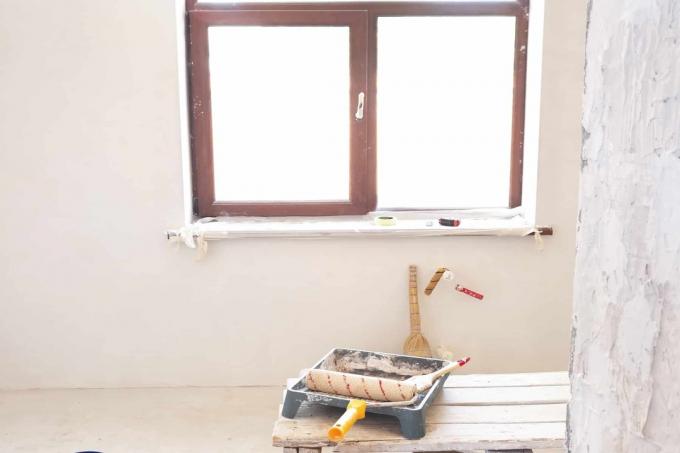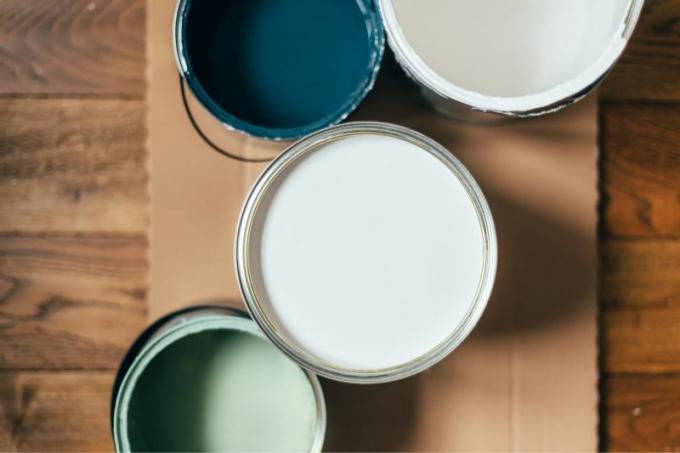

Table of contents
- epoxy resins
- mixture
- processing
- pot life
- application
- Harden
- protective measures
It doesn't matter whether it's an aquarium or a yacht, rotten furniture, a laminate floor, a model airplane or whatever - epoxy resin can always be used here. The adhesive and sealing function of this material is so good that it is not only used for repairs. There are also other positive properties. However, you should know the basics of processing.
epoxy resins
Epoxy resins are so-called reaction resins. This refers to liquid synthetic resins that can harden relatively easily to form a duroplastic material. The exciting thing about it: The liquid consistency initially allows versatile and easy use, while the hardened plastic then has an extremely high stability. The curing itself takes place at room temperature and does not require great pressure. Against this background, it is not surprising that the material developed in the 1930s can be found almost everywhere today.
Typical uses include:
- Construction adhesive in boat and glider construction
- metal glue
- Mortar based on a plastic
- Casting resin for components in the casting process
- floor coatings
- Coatings to protect against corrosion
- sealant
- plastination
The spectrum of concrete applications ranges from the construction of a glider to the interior renovation of pipes and orthopedic technology. Since the material is completely non-toxic when hardened, it is often used to build aquariums and terrariums as well as for model building. So far, epoxy resins cannot be recycled and usually have to be disposed of thermally. In addition, they are currently still made exclusively from petroleum. However, attempts to obtain them from renewable raw materials are already underway.
A notice:
The thermosetting plastic that is created after curing is completely non-toxic. The epoxy resin itself, on the other hand, can very well lead to symptoms of poisoning and physical impairments.
mixture
Epoxy resins are not ready to buy. They have to be mixed before they are actually used. You have to know that the material consists of two basic components – namely the actual synthetic resin and a hardener. Only when these two components are mixed together in a specific mixing ratio does the desired duroplastic material arise. In this context one speaks of a stoichiometric resin-hardener ratio. This must be adhered to meticulously, otherwise the desired properties will not be achieved or will only be achieved insufficiently.
The ratio depends on the respective product. The manufacturer's specifications for mixing must therefore be implemented exactly. However, these can also be varied under certain circumstances - namely when certain properties are desired. In this way, the hardness or elasticity of the thermoset can be influenced.
A notice:
When varying the mixing ratio, you should find out in advance exactly which composition is necessary for which effect.
processing

The central basis for the processing of epoxy resins is the mixing of the two components in a precisely specified mixing ratio. There is an A component (the synthetic resin) and a B component (the hardener). Both are always delivered together. The mixing is done by adding the B component to the A component and then mixing it with it. After thorough mixing, the epoxy resin is ready for use.
pot life
Pot life is the time in which the mixed epoxy resin can be processed. During this time, the mass remains in a liquid, non-hardened state. The length of the pot life depends on the following factors:
- Type of epoxy resin chosen
- Variation of the mixing ratio
- processing temperature
- Amount of resin mixed
The manufacturer's information on the pot life or Processing time usually refers to a mass of 100 grams and a processing temperature of 20 degrees Celsius. Larger quantities automatically develop a higher reaction temperature, which in turn leads to a reduced pot life. In principle, the processing time can range from a few minutes to hours.
Tip:
It is better to mix a little less epoxy resin than too much, as too much can quickly lead to the resin no longer being workable.
application
The application of the epoxy resin is called application. This means, for example, applying the mass to a surface or inserting it into a joint. Different tools such as a spatula, spatula, trowel or even a syringe or syringe are used for this. used an applicator. Which tool you choose depends primarily on the type of application. You should always work as quickly and very carefully as possible. Larger areas must be coated evenly. Excess epoxy resin must be removed immediately, as this can usually no longer be done after curing.
Harden
The phase after application through to the finished thermoset is called the curing time. It is usually at least a couple of hours. Precise information on this is very difficult to provide. They in turn depend on the specific quantity and the processing temperature. Only after the final hardening is the workpiece in question fully loadable or durable. operational. Curing can be accelerated - for example by adding photoinitiators with ultraviolet light. The curing time can be reduced to a few seconds in some cases.
protective measures

When processing epoxy resins, gloves should always be worn to protect the skin. Both the synthetic resin and the hardener can lead to allergic and very unpleasant skin reactions. Nitrile or butyl gloves as well as PE laminate gloves are suitable for this. Disposable gloves made of latex or vinyl, on the other hand, are extremely unsuitable, since these materials can be penetrated by the two starting materials. It is also important to ensure good ventilation of the premises. However, it is not necessary to wear a respirator.
 Home editorial office
Home editorial office
Learn more about paints & varnishes

Cream-colored kitchen: which wall color fits?
If you own a cream-colored kitchen, you don't have to despair with the wall colors. There are numerous shades that go wonderfully with the interior, underline it or create an attractive contrast. We introduce you to 30 wall colors that match the kitchen.

White kitchen: these 30 wall colors match
A white kitchen is the ideal basis for numerous wall colors. They are either selected individually according to your own taste or to match the design of the kitchen. Even combinations are possible. We introduce you to 30 wall colors that match white kitchens.

After painting: ventilation and windows open or closed?
Should you ventilate while painting or only after painting? The answer to this question is more complex than expected. This guide shows what determines whether the windows should be open or closed.

Dilute wall paint without losing opacity
Opacity is an important factor when using wall paints. Emulsion paints in particular are known for their good covering power, but they are sometimes too viscous or sticky to apply. For this reason, it is important to properly dilute wall paint.

Dispose of wall paint: where and how much does it cost?
Under the appropriate conditions, wall paint can be disposed of in various ways. Because in liquid form, paints are so-called problematic substances that can harm the environment. We will tell you where you can dispose of wall paint and what the costs are.

How long does wall paint take to dry?
Most rooms in the house are used daily. When the walls get a new coat of paint, everything has to happen quickly. But furniture and pictures can only take their old place on the wall when everything is finished. But how long does the wall paint need to dry?



